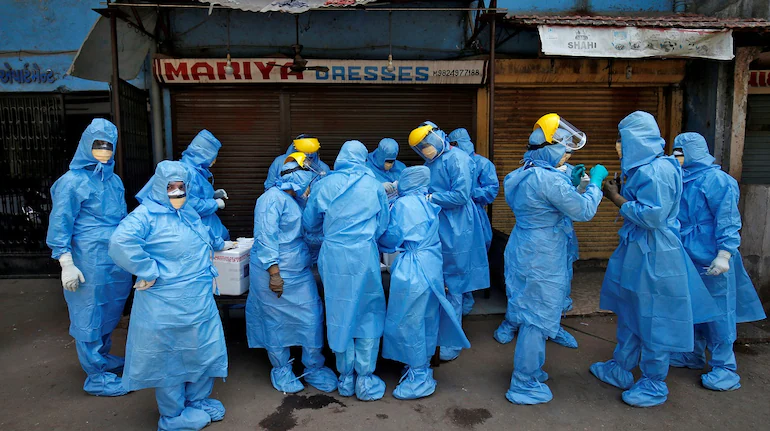The latest COVID-19 epidemic in Southwest China’s Xizang (Tibet) Autonomous Region is causing widespread worry owing to a scarcity of medical professionals and nucleic acid testing sample collectors, as well as a lack of oxygen for treating severe cases due to the region’s high altitude.
“Even if we mobilised all of its medical professionals, including administrative staff, against the epidemic, the hospital now doesn’t have the manpower to deal with the abrupt COVID-19 flare-up,” an employee from a functional department of the Xigaze Tibetan Hospital told the Global Times on Tuesday.
“The treatment of mild cases is not a big problem for Xizang, as makeshift hospitals are arranged to take care of them,” a doctor from the Lhasa People’s Hospital said, “but the treatment of severe cases would be a challenge due to the lack of oxygen in the high-altitude location and limited medical equipment.”
The Xizang (Tibet) Autonomous Region, which is home to over 800,000 people, reported 27 instances on Tuesday, according to Global Times.
The youngest patient is two and a half years old, while the oldest is a 76-year-old lady, according to the Xizang regional health commission.
According to gene sequencing testing, the COVID-19 cases discovered in Lhasa, the capital of Southwest China’s Xizang (Tibet) Autonomous Region, were a familial cluster infection caused by imported Omicron subvariant BA.2.76.
Previously, it recorded 22 cases since Sunday, with 18 cases discovered in Lhasa and four instances discovered earlier in Ngari Prefecture’s Burang county, ending the region’s 920-day streak of no cases. The vast majority of these instances had no symptoms.
Following an increase in COVID-19 cases, Chinese officials temporarily banned the World Heritage sites Potala Palace and Norbulingka, as well as the Tibet Museum in Lhasa, to tourists on Tuesday, with an unclear reopening date.
According to Global Times, Lhasa aims to impose “static control” in medium- and high-risk zones, while cross-city travellers in low-risk areas would be required to submit a 48-hour negative nucleic acid testing result.
On Monday, Xigaze placed the whole city under three days of static control, with no one permitted in or out. Local people must remain indoors, and public transit is stopped as part of what officials refer to as “static management.”
COVID-19 infections continued to climb on Tuesday in Northwest China’s Xinjiang Uygur Autonomous Region, despite a 10-day epidemic response. The daily total for Monday was 146, bringing the total number of infections to 420 as of press time.
Covid-19 Infection Spread
COVID-19 has infected at least 12 counties in seven prefectures in the Xinjiang area since the first case was discovered on July 30, according to Global Times.
Zhang Yuexin, a medical specialist specialised in epidemic prevention and control, stated, “The issue for Xinjiang is that more instances can still be detected throughout communities, indicating that the transmission chain has yet to be severed.”
“This outbreak in Xinjiang was caused by imported commodities in the Ili Kazak Autonomous Prefecture. Long-term testing for Xinjiang will be how to better prevent viral transmission from foreign goods “He continued.
According to local health officials, the Xinjiang area has been struck by many sporadic clusters of COVID-19 infections, and the present epidemic prevention and control situation remains dire.
According to data from the Xinjiang Uygur Autonomous Area’s Department of Culture and Tourism, the number of tourists in the Xinjiang region has increased this summer.
People gatherings and cross-regional travel may have enhanced viral transmission and the risk of its spread both inside and outside of Xinjiang, according to health officials.
Meanwhile, Sanya, in Hainan Province, returned 125 travellers to Xi’an, in Northwest China’s Shaanxi Province. 80,000 people were stuck in the city renowned as “Hawaii of China” and one of China’s most popular tourist spots.
The Hainan province, which has a population of over 10 million people, reported 40 additional local cases on Tuesday, increasing the total number of infections to 1,899, including 1,558 in Sanya.
Also Read: International Female Orgasm Day: 5 Health Advantages of Regular Sex
The Omicron BA5.1.3 strain produced a sudden flare-up in Hainan, starting from the primary fishing port of Yazhou district in Sanya, and over 180,000 visitors were stuck in the province as of Sunday.
Follow Medically Speaking on Twitter Instagram Facebook

